- Spain
- Things to do in Seville
- Triana
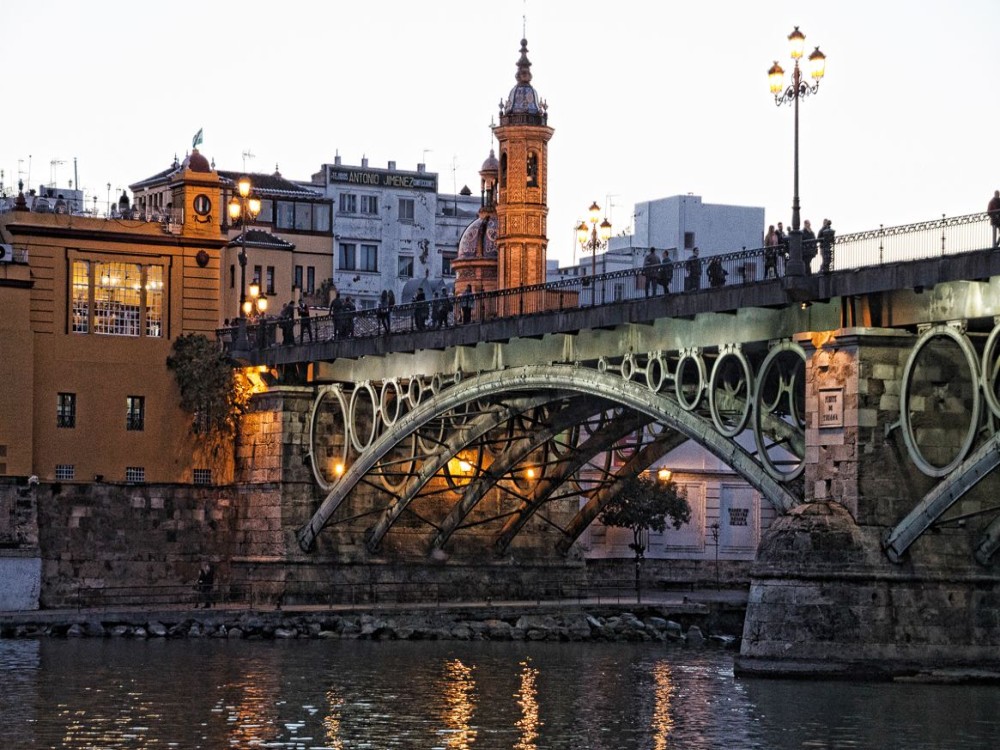
Triana
Triana is one of Seville's most vibrant and historic neighborhoods, located just across the Guadalquivir River from the city center. Known for its deep-rooted flamenco culture, traditional ceramic workshops, and lively tapas bars, Triana offers an authentic taste of Seville's local life. Historically, it was the home of sailors and potters, and its streets are filled with a mix of rustic charm and modern energy. Wander through its cobbled lanes, admire colorful ceramic tiles decorating buildings, and explore landmarks like the Castillo de San Jorge (San Jorge Castle) and the Triana Market. With its relaxed yet buzzing atmosphere, Triana is the perfect place to experience the essence of Seville away from the main tourist crowds.
Triana Tours & Excursions
The Basics
Triana has long been associated with Seville’s ceramic industry, and its traditional pottery shops are a highlight for visitors. The neighborhood is also a hub for flamenco music and dance, with many tablaos (flamenco venues) and bars where you can hear live performances. Key attractions in Triana include the Puente de Isabel II (Isabel II Bridge), which connects Triana to the city center, and the Castillo de San Jorge, an ancient fortress that now houses a ceramic museum. The Triana Market is a great place to experience the local food scene, offering fresh produce, seafood, and tapas. The neighborhood is also known for its lively atmosphere at night, with bustling bars, cafes, and restaurants offering a true taste of Andalusian hospitality.
Things to Know Before You Go
Triana offers a more laid-back vibe compared to Seville’s more tourist-heavy areas, but it’s still a must-visit for those wanting to experience authentic local culture. The neighborhood is best explored on foot, and many of its attractions are free to visit, such as the charming streets and plazas filled with ceramics. While Triana is less crowded than Seville’s center, it can still get busy during weekends and holidays, especially around the Triana Market. Be sure to wear comfortable shoes, as the streets can be uneven and hilly in some parts of the neighborhood. Flamenco fans should check the schedules of local tablaos for an opportunity to see an intimate live performance.
How to Get There
Triana is easily accessible from Seville’s historic center, located just across the Guadalquivir River. If you're staying in the city center, you can reach Triana by walking across the Puente de Isabel II (also known as the Triana Bridge), which offers beautiful views of the river. Alternatively, you can take the tram or a bus to the Plaza de Altozano stop, which is located in the heart of Triana. The neighborhood is also served by several taxi and ride-sharing services, which can drop you off directly at your desired destination. Once in Triana, it’s best to explore on foot, as the neighborhood’s charm is found in its small streets and local spots.
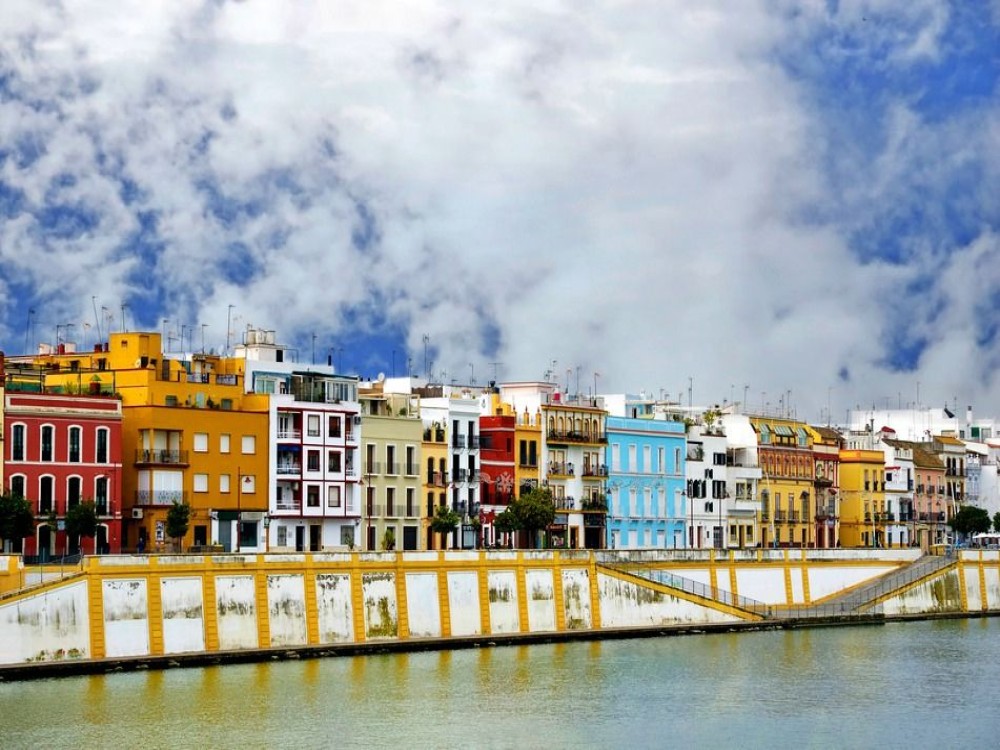
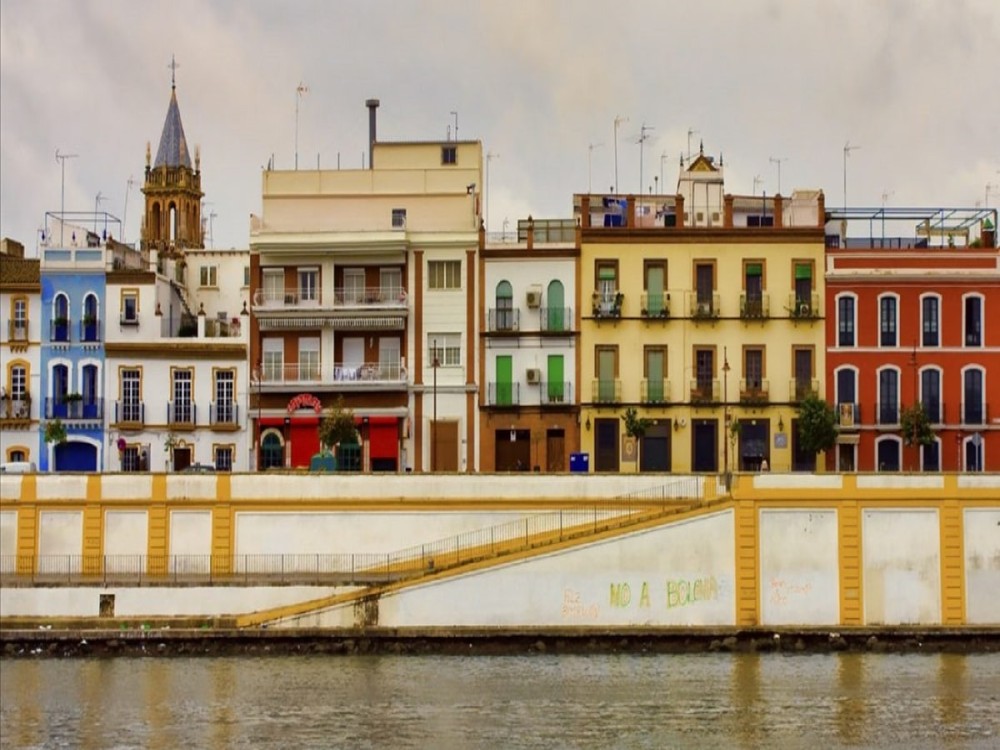
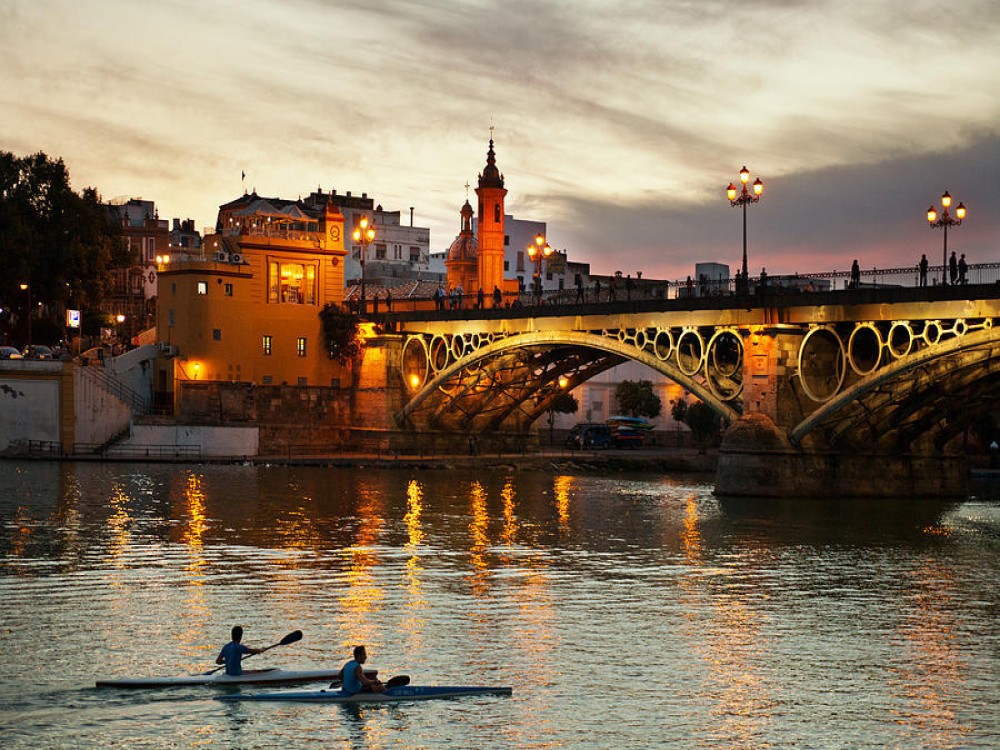
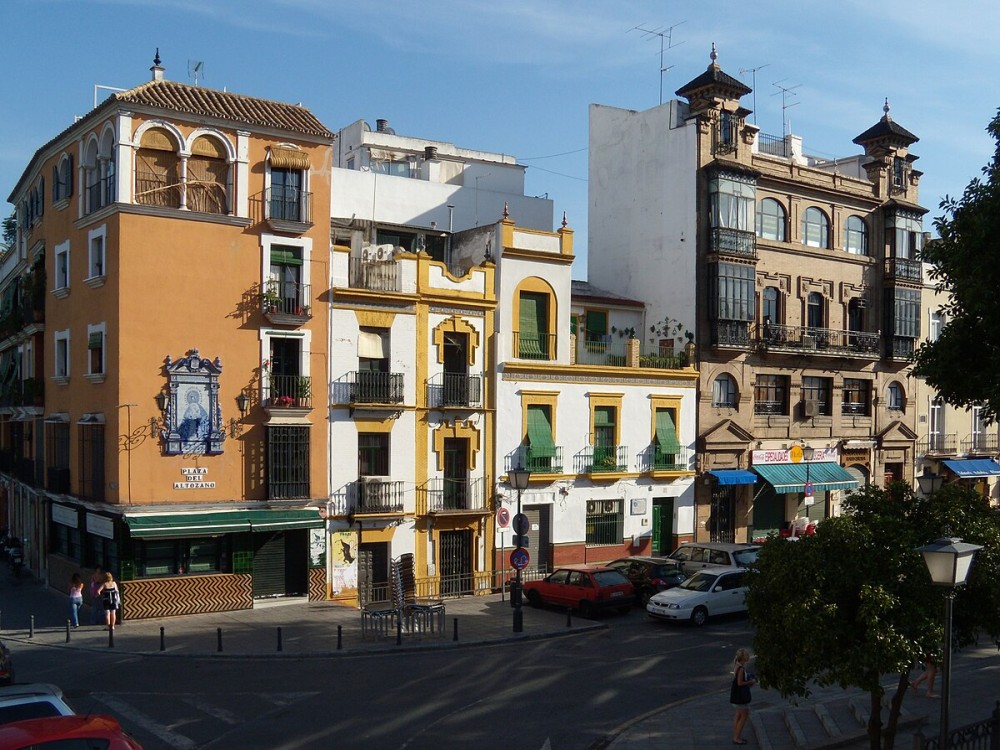
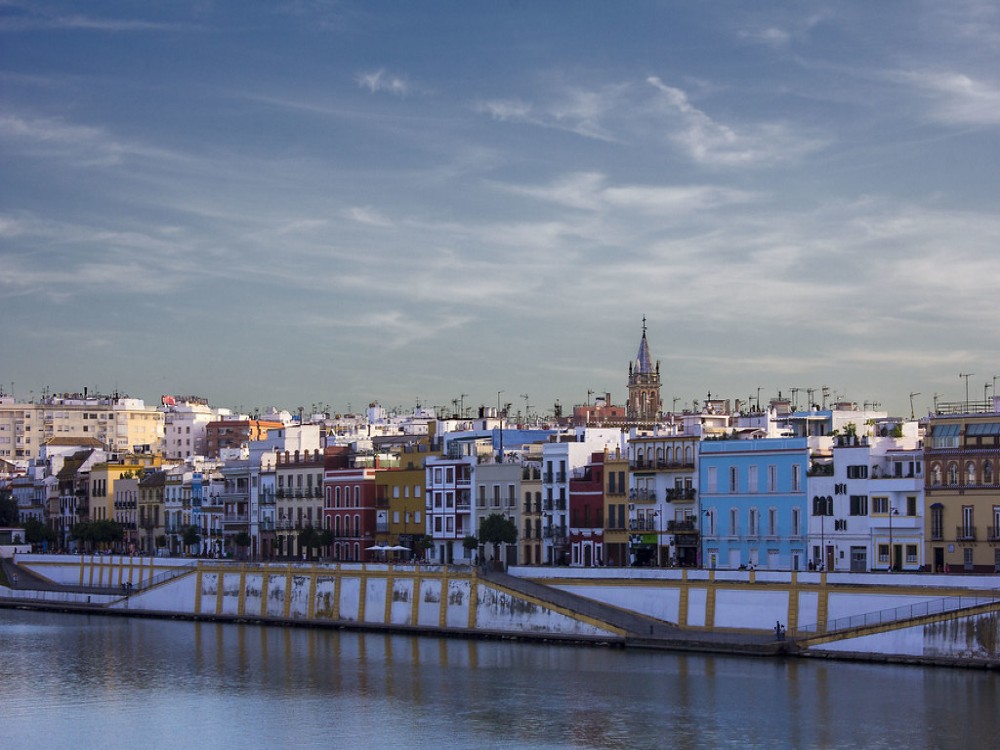
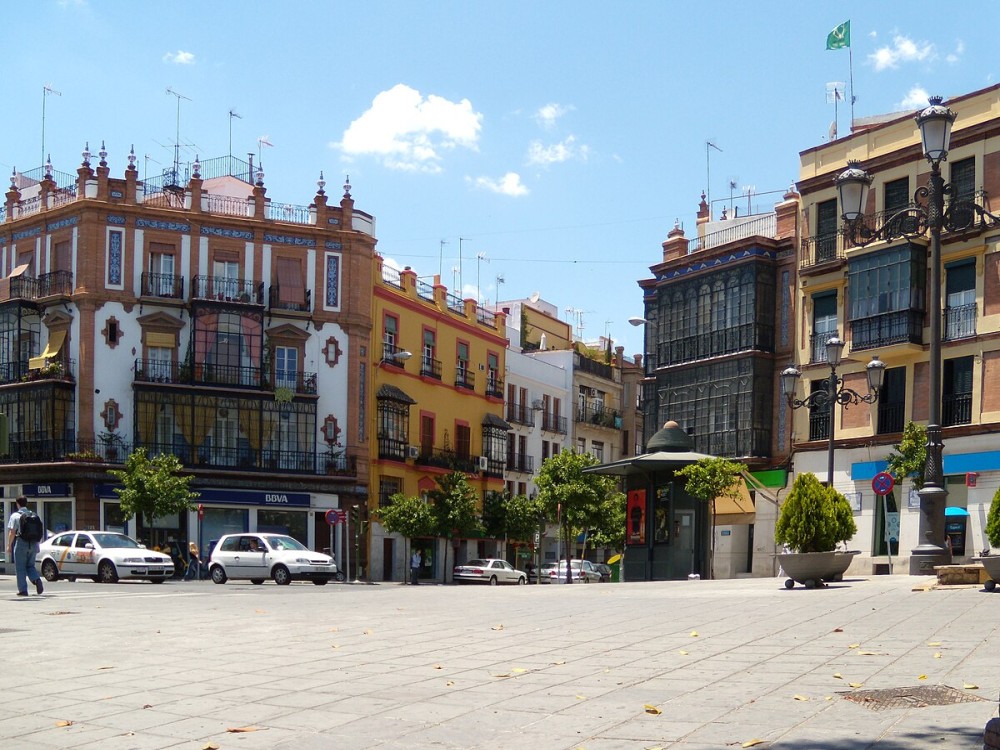
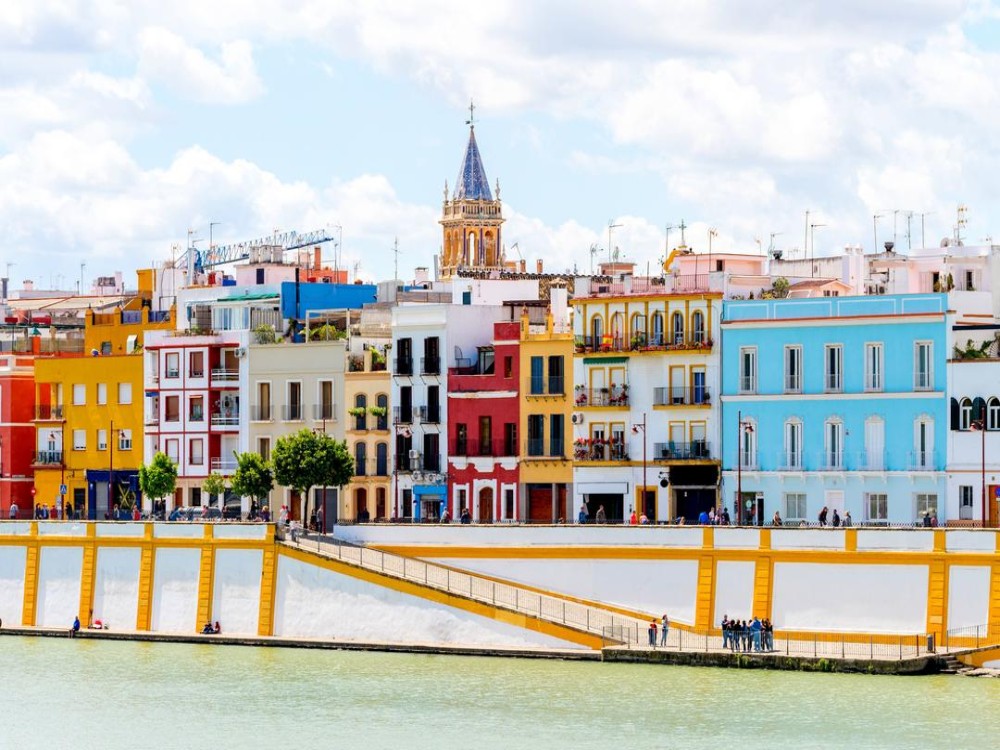

When to Get There
The best time to visit Triana is in the late afternoon or evening, when the area comes alive with activity. The temperature is generally more pleasant during these times, and you can enjoy a leisurely stroll through the neighborhood’s charming streets. The evenings are perfect for experiencing the lively atmosphere of Triana's tapas bars and flamenco venues. During the summer, Triana can get quite hot, so early mornings or evenings are ideal for exploring. If you want to avoid crowds, visiting during the weekdays is a great option. Spring and fall are also excellent seasons for a visit, with mild temperatures and the neighborhood’s beautiful architecture and ceramics on full display.
Day Trips from Seville
Triana is a fantastic base for exploring Seville, with many key attractions within walking distance. After exploring the pottery shops and flamenco venues, cross the Puente de Isabel II into the city center to visit the Plaza de España, the Seville Cathedral, and the Royal Alcázar. You can also take a relaxing boat ride along the Guadalquivir River, offering a different perspective of Seville. For a more local experience, visit the Triana Market and sample some Andalusian specialties or wander through the streets to discover hidden gems like the Calle Pureza and Calle San Jorge. Many guided walking tours of Seville also include Triana as part of the itinerary, giving visitors a deeper insight into the neighborhood's history and culture.
Copyright © 2025 All Rights Reserved


